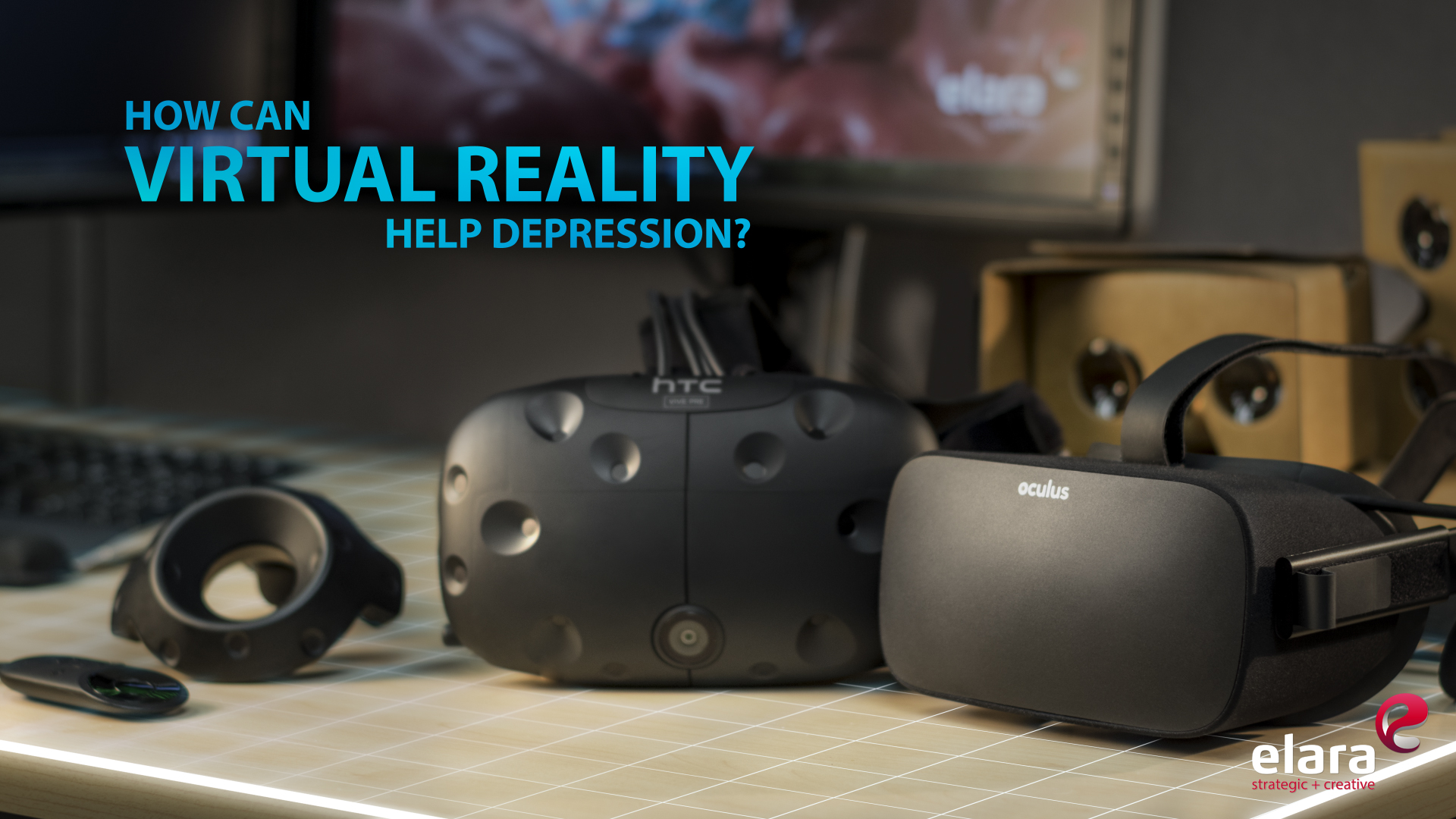
How Virtual Reality Can Help Depression
A recent study by the University College London (UCL) and ICREA-University of Barcelona proposes that immersive virtual reality could be a revolutionary way to treat depression. The study, published in the British Journal of Psychiatry Open in 2016, finds that immersing themselves in virtual reality can train patients to be less critical of and more compassionate towards themselves.
Cognitive Behavioral Therapy (CBT) is known as “mindfulness.”
VR and Depression
Because many symptoms of depression are feelings-related, this technology can be a game-changer in the expansion of tools and techniques for treating depression.
What is Depression?
Depression, also known as a major depressive disorder, is a serious mental illness that affects a person moods, emotions and actions. The condition is clinically diagnosed and has the tendency to negatively affect the wellbeing and overall quality of life of those suffering from it.
The American Psychiatric Association reports that one in 15 adults is affected by depression a year. Another one in six people will become depressed at some point.

VR for Depression
The use of virtual reality to treat mental health symptoms was first introduced at MIT in the mid-1960s. This therapeutic technique has already been used to treat patients with post-traumatic stress disorder (PTSD) and spider phobia. The Duke University Virtual Reality Treatment Program uses VR content to treat anxiety disorders related to the fears of flying, public speaking and heights.
Symptoms of Depression
Some of the most common depression symptoms are as follows. They may occur as multiple episodes every day or most days:
• Feeling sad, hopeless or empty
• Loss of interest or pleasure in normal activities once enjoyed
• Feelings of frustration, agitation or anxiousness
• Sudden outbursts of anger over minor things
• Thoughts of suicide
• Feeling guilty or unworthy
• Trouble sleeping or oversleeping
• Increase or decrease in appetite
Treatment for Depression
Medication: Antidepressants have been traditionally used as the first line of treatment for depression symptoms. It is typically used to treat depression that stems from chemical imbalances in the brain. These chemicals are called neurotransmitters, namely serotonin, dopamine and norepinephrine. The most commonly used antidepressant drugs are Selective Serotonin Reuptake Inhibitors (SSRIs), Serotonin-Norepinephrine Reuptake Inhibitors (SNRIs) and Monoamine Oxidase Inhibitors (MAOIs)
These medications work to balance the chemicals which result in stable moods and improvement in negative emotions and other depression symptoms.
Psychotherapy: Also known as “talk therapy,” this form of treatment may be used as a monotherapy when mild depression is diagnosed. However, psychotherapy is sometimes used in combination with antidepressant drugs, particularly in cases of moderate to severe depression.
The most common form of talk therapy is Cognitive Behavioral Therapy (CBT), done in-person by a mental health professional. It teaches patients mindfulness and problem solving and has been proven to be an effective form of depression treatment for thoughts and behavioral changes.
Antidepressants Side Effects
Although proven effective, antidepressants cause some serious side effects. An increase in suicidal thoughts is one of the most serious side effects that threaten the health and life of patients. Other common side effects are nausea, insomnia, drowsiness, fatigue, anxiety, agitation and restlessness.
Virtual reality therapy could be a safer method of treatment as it does not carry any of the side effects caused by antidepressants.
How Virtual Reality Can Help Treat Depression
The use of virtual reality to treat mental health symptoms was first introduced at MIT in the mid-1960s. This therapeutic technique has already been used to treat patients with post-traumatic stress disorder (PTSD) and spider phobia. The Duke University Virtual Reality Treatment Program uses VR content to treat anxiety disorders related to the fears of flying, public speaking and heights.
Since the 1960’s, the concepts of virtual reality were taken and are being developed into a more clinical and sophisticated method of treating depression.
The virtual reality technology resembles that of a game entertainment system. Patients will use a virtual reality headset with a viewing screen to see themselves from the perspective of a life-size avatar. This is known as “embodiment.”
Controlled Environment
The mental health consulting room will be equipped with consoles and headsets to help patients to relive experiences that caused their depression symptoms. Therapy session will be conducted in a controlled virtual world where patients will be triggered by acts done by their avatar. These are triggers that would typically elicit negative thoughts and reactions of self and others.
A patient will have the option to choose their reaction from a pop-up menu and submit it into the virtual world. This way, they will actually see their thoughts and behavioral responses from a third-person perspective. A therapist will interact with and guide the patient throughout the session.
Efficient and Convenient
The efficiency of using VR treatment for depression lies in the ability of the technology to create situations that will teach patients how to manage their thoughts, feelings, and reactions to things that trigger their depressive episodes. Tests can also be conducted to test responses to situations a patient has never experienced but could potentially face. Patients will be trained to change or alter their reactions to real-life situations to change the outcome from a negative to a positive one.
Undergoing therapy in a controlled virtual world can remove fears, anxiety and stigma felt when undergoing traditional exposure therapy. This is where patients are forced to go out into the real world to face or re-live certain life experiences. In fact, patients who are shy or ashamed will be able to engage in sessions remotely from the privacy of their own home.
Cost-Effective
Considering the methods of production and relatively low cost of virtual reality systems on the market, it is likely that virtual reality systems for therapy could be as affordable. Their use can become widespread, as more and more people who suffer from depression may buy into this more non-invasive form of depression therapy.
The use of this state-of-the-art tool may also mean huge insurance savings since virtual reality therapy can be less time-consuming. The insurance savings factor seems promising in terms of reducing the overall cost of depression treatment on the economy when considered against the national statistics.
Conclusion
The use of this new technology to fight depression is still evolving and needs tweaking to make it practical and effective. But, once officially approved as a method of therapy, virtual reality could provide a revolutionary way to treat patients using state-of-the-art technology and innovate techniques.
So far, participants of virtual reality trials have reported significant improvement in their depression symptoms. Some reported being less self-critical when faced with real-life situations. A critical analysis of the study, however, supposes that virtual reality therapy seems to work best in the treatment of anxiety disorder.
Using VR treatment for depression does not mean that treatment will become obsolete, especially with antidepressants and psychotherapy. But at least, patients won’t have to deal with the serious side effects of antidepressants or the pressure or stigma attached to exposure therapy.
Learn more in our VR in Medical Field post.

















